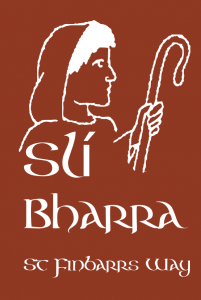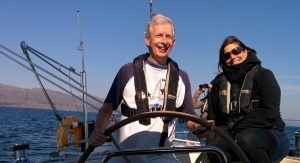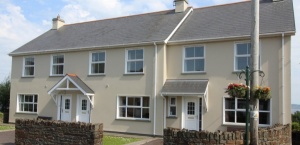The Poet’s Way Loop Walk on the Sheep’s Head Way is named for the poet Denis M. Cronin who was born in the townland of Eskeraha on the peninsula
His epic poem ‘The Chase of a Shadow’ was written in 1898 and salutes the beauty of this part of the world:
From pole to pole should my migration bend;
Or twice around the world should they extend,
No place in all those travels could be found,
To my mind’s eye, so adequately crowned
With nature’s diadems, serene, profuse,
At these romantic and unrivaled views.
The nearly 200-page narrative poem tells the story of Fergus, a young Irish aristocrat from The Sheep’s Head peninsula who is separated from his family, his country and his true love by Ireland’s 1798 rebellion.
For the modern hiker on the Poet’s Way Loop Walk, this loop walk takes you past dazzling inlets, coves, blow holes and sea arches along the way. You’ll also see a ruined 17th-century signal tower as you go, and the summit of Ballyroon Mountain provides spectacular views over Bantry Bay, Dunmanus Bay, and the Mizen and Beara peninsulas.
Poet’s Way Loop Walk Route
From the car park at Tooreen follow the red loop walk arrows. Set out in a southwesterly direction on the Dunmanus Bay side of the peninsula to the lighthouse passing Lough Akeen en route.
After the helicopter pad, the Sheep’s Head lighthouse comes into view and if you wish you can climb the concrete steps that lead up to it!
The loop returns on the Bantry Bay side, and at the Daingean sign near way marker no. 272 continue straight along the main route. At way marker no. 238 veer right and walk a short distance along the public road. Turn right at the finger post sign for “The Poet’s Way” and go off road over a timber stile, way marker no. 65 Poet’s Way/Cahergal.
Follow the way markers to traverse the peninsula to the south side until you meet way marker no. 348. At this way marker turn right and continue on along in a southwesterly direction. You will then descend downhill and go over a timber stile and onto the road.
Turn left here along the road for a short distance passing the “Fáilte Faill Bheag” sign on your way. At way marker no. 337 turn right up a tarred road and onto a track. Continue on passing the ruins of an old signal tower and a World War Two look out post further on, until you will descend and return back to the car park at Tooreen.
Note: Be aware of weather conditions, unprotected dangerous cliffs and cut away peat bogs along the loop walk. Be aware of any livestock on the land, especially any bulls. Please do not exit marked trails only on marked routes. No dogs are allowed on The Sheep’s Head Way.
Emergency: Phone 999 or 112 and state whether you need Ambulance, Gardaí (police), Fire Brigade or Mountain Rescue.
To identify your location on the Poet’s Way Loop walk, please quote the number of the nearest way marker pole or your GPS/grid co-ordinates.
LEAVE NO TRACE
• plan ahead and prepare
• be considerate of others
• respect farm animals and wildlife
• leave what you find
• camp on approved sites or with landowner’s permission
• dispose of waste properly
Practising a Leave No Trace ethic is very simple: make it hard for others to see or hear you and leave no trace of your visit.
| Download GPX File for GPS: | Download Poet's Way Loop Walk GPX file |
| Download File for 3D View on Google Earth: | Download Poet's Way Loop Walk KMZ file |
| Start/End Point: | Car park at the end of the road on the Sheep's Head peninsula. |
| Length: | 12.4 kilometres |
| Difficulty: | Difficult |
| Estimated Time: | 4 hours 30 minutes (Based on average walking speed of 3km per hour) |
| Arrows: | Red |
| Terrain: | Paths, tracks, rocky trails, minor roads. |
| Ascent: | 462 metres |
| Max Height: | 239 metres |
| Facilities: | The walk begins and ends near the Cupán Tae cafe. Car park, bike rack, and public toilet available. |



